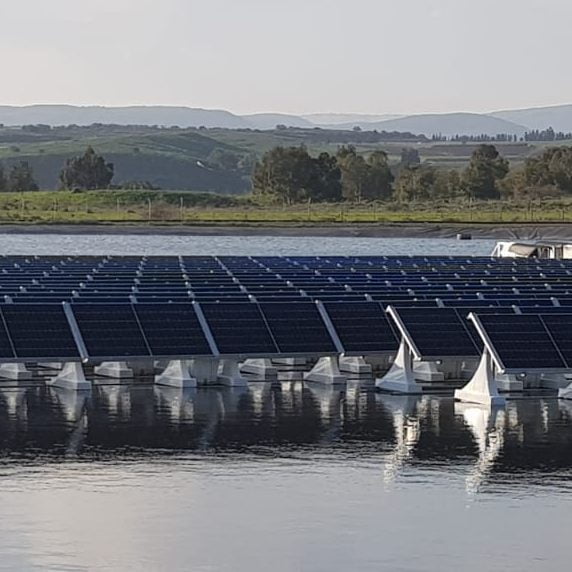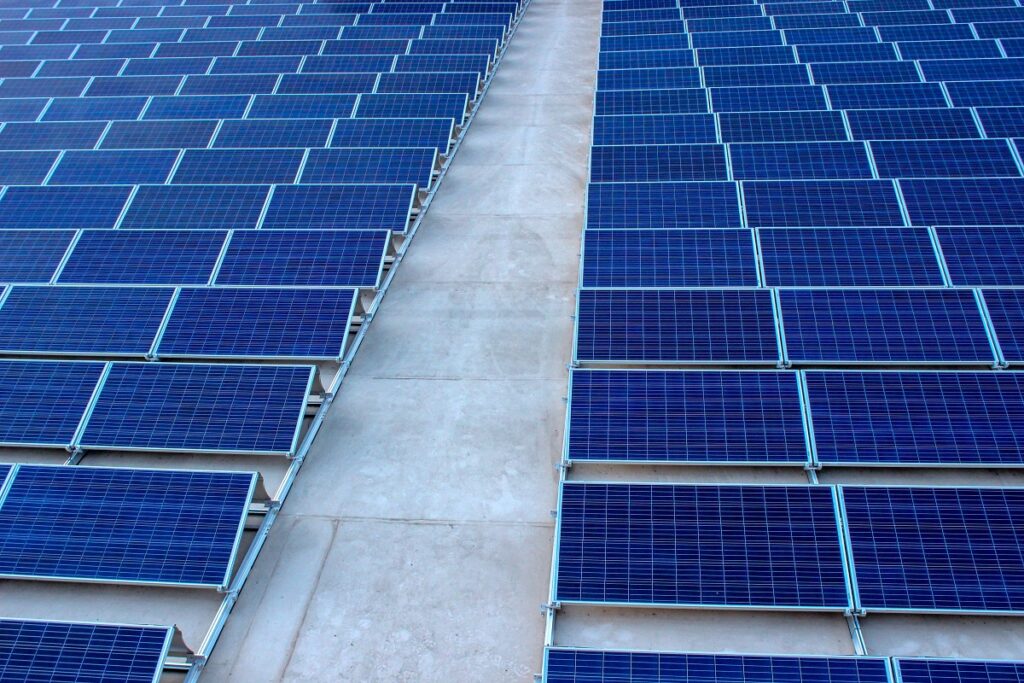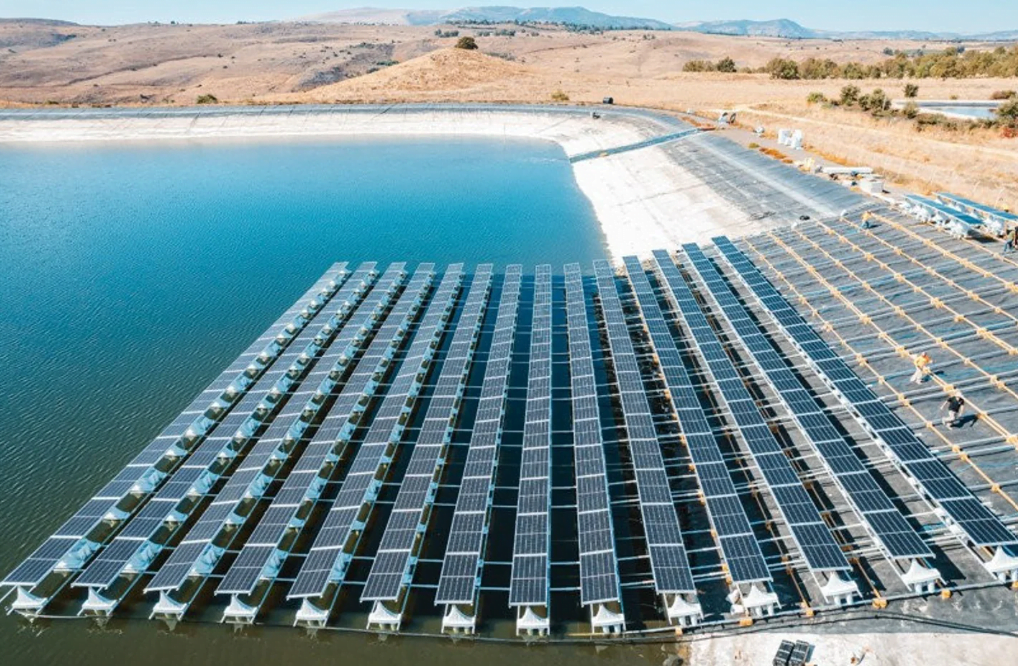With the severity of the climate crisis potentially crossing the 1.5℃ warming threshold by 2026, the transition towards clean energy production and an overall green, sustainable economy has never felt more urgent. If average global temperatures exceed 1.5℃, experts have warned that the effects could be irreversible.
Today, solar photovoltaic (PV) technology is one of a handful of energy alternatives leading the transition towards a cleaner future. But like most developments, we see solar panel infrastructure built on land like on urban rooftops or in rural areas, something that many countries are finding difficult to spare.
Israel, for example, lacks roughly 12,000 acres to meet its 30 percent share of renewable energy goal by 2030.
But what if land wasn’t a limiting factor for solar energy? What if we could harness the unused surfaces of our lakes and various types of water reservoirs instead? This is the concept behind floating photovoltaics (FPV), otherwise referred to as floating solar––PV modules mounted on buoyant platforms that float on sunlit bodies of water where surface conditions are calm.
Early last week, Israel announced a project to test a floating artificial intelligence (AI) that generates electricity by tracking the sun. The solar photovoltaic (PV) system, developed by Israeli startup Xfloat, is designed to move and track the sun while floating on reservoir water. The project is being carried out in cooperation with Mekorot, Israel’s national water company, the Israel Innovation Authority tells NoCamels.
“As part of the cooperation, Xfloat’s floating panels will be installed on Mekorot’s water reservoirs,” Shir Azaraf, a spokeswoman for the Finance Ministry, told the Chinese news agency Xinhua.
Although currently more expensive to install than ground-mounted solar arrays, FPVs free up land that can be used for an assortment of other environmental, residential, or commercial purposes. In addition, they can help reduce evaporation from water sources that are otherwise vulnerable to drought while they generate energy, and they maintain greater efficiencies over time under high temperatures due to the cooling effect given off by the water.
Xfloat’s product is based on machine learning capabilities. The company has created an intelligent water management system that controls water loads and pumps for accurate tilting and tracking. The company then refines the data collected from sensors, which are directed to a knowledge-based machine learning process for predictive PV performance and O&M (operations and maintenance.) Dedicated supervisory control and data acquisition (SCADA) and optimization tools stream the data to improve tracking and O&M algorithms. SCADA is a control system that is comprised of computers, networked data communications, and graphical user interfaces to supervise a process.
Xfloat’s system has buoyancy tanks arranged in a grid of connected vessels that control the rotation of the PV tracking tables in unison. The system uses no motors or hydraulics. Instead of using gears to tilt the panels, it uses a flexible, hydrostatic positioning mechanism.

“The electricity generated this way could be used by everybody, including industrial plants and home consumers, because the process is cheap and clean,” Azaraf added.
According to its website, Mekorot “aims to be a leader in energy efficiency and in minimizing the use of conventional sources of energy that harm the environment.”
Sign up for our free weekly newsletter
Subscribe“Mekorot has a lot of uses for electricity every day and this fact may help the company and may dramatically lower the electric costs,” Zvica Goltzman, VP of the Growth Division at the Israel Innovation Authority, tells NoCamels. “Of course, it’s also supposed to give better water rates to the customers.”
The Xfloat – Mekorot collaboration is one of the projects included in a national program where four Israeli startups were selected by the Israel Innovation Authority to test innovative technologies at government sites with Israeli state support of up to 50 percent.
SEE ALSO: Tel Aviv Tests Solar Energy Fabric That Shades By Day, Lights Up By Night
“The bottom line is, if Mekorot says, ‘This is something I find very important. This is something that might help me. This is something that will lower our costs. So then we’ll support it.” Goltzman adds.
Collaboration for innovation
The collaboration between the IIA and various government departments enables the opportunity to focus state efforts on 12 tracks, including digital health, transportation, environmental protection, cyber defense, space, and more, the IIA tells NoCamels.
Other technologies chosen include an automated bus terminal management platform, online sign language translation on trains, and AI drone navigation without GPS.
“The idea is to give cutting-edge Israeli technologies the possibility to try their technology for the first, second, maybe third time, in a very good, high-quality pilot site,” Goltzman says, before referring to the death valley curve, the period in the life of a startup where it has begun operations but is not yet generating revenue. The term, commonly used among venture capitalists, also refers to the company’s depletion of its initial equity capital provided by shareholders, before it generates a return on investment.

“When we deal with new, cutting-edge technologies, there’s this death valley [curve] when you don’t have a proof of concept. Nobody wants to invest in you, because you still don’t have a proof of concept. And then there’s a second death valley curve. This second death valley curve is finding your first paying customer. Just because you have a proof of concept doesn’t mean it will be easy for you to find that first customer, especially when we talk about big traditional companies like governmental companies,” says Goltzman.
When connecting the companies that create the innovative technologies, with potential customers, the Israel Innovation Authority is enabling the testing or piloting within a governmental facility or infrastructure and allowing them to experience the technology.
“You know, in real situations, we allow the government to test new technologies and implement them in order to better their operation. And then the company itself — a firsthand customer, creates testimonials in order to help that tech company go to the international market and sell to a third party. So it’s a win-win situation,” he adds.
Related posts

Editors’ & Readers’ Choice: 10 Favorite NoCamels Articles

Forward Facing: What Does The Future Hold For Israeli High-Tech?

Impact Innovation: Israeli Startups That Could Shape Our Future




Facebook comments